Science Daily News | 08 Jun 2023

Views (121)
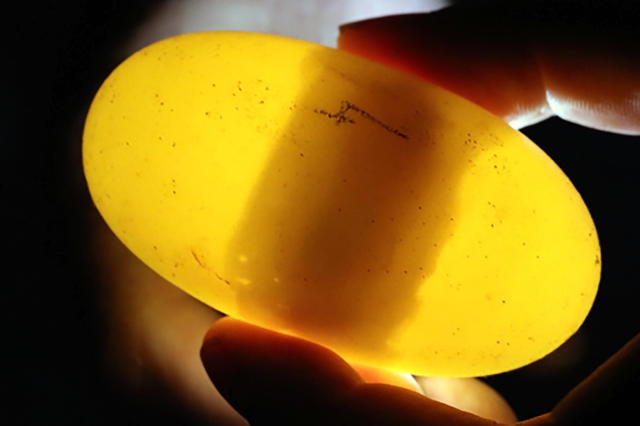
Basildon council makes 'go wild' suggestion as green bin fees start
Households in Basildon must now sign up and pay to have their garden waste collected.
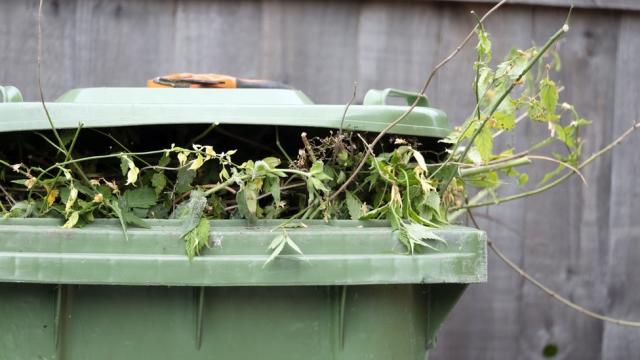
Residents in an Essex borough are being charged for garden waste collections from this week.
Basildon Council switched to its subscription-only service for green bin collections from Monday.
The local authority suggested households could alternatively "leave your garden wild".
The council is one of several in Essex that has, or is considering, the introduction of a subscription charge.
Households are being charged £25 per year for 2023-24 and are due to be charged £50 for 2024-25.
The council said it previously collected garden waste from about 40,000 properties - and that more than 25,000 households had so far signed up.
Basildon launched a consultation on its waste strategy last year and 84% out of 7,000 responses were against or strongly against the charges.
Councils at Brentwood, Castle Point, Harlow, Maldon, Tendring, Southend and Uttlesford have already introduced the charges - in line with other local authorities across the country.
Leaders gather in Paris to accelerate wringing more out of every ounce of fuel
As 30 energy environment and trade ministers plus 50 CEOs assemble in Paris for the 8th international conference on energy efficiency, the International Energy Agency is urgently calling for greater investment in energy efficiency for factories, cars and appliances to meet international climate goals. “We’re at a real juncture where more efficient, more clean, more affordable technology is starting to dominate,” said Brian Motherway, chief of energy efficiency at the IEA, during a press conference Tuesday. Government policies that encourage energy efficiency are driving the trend.
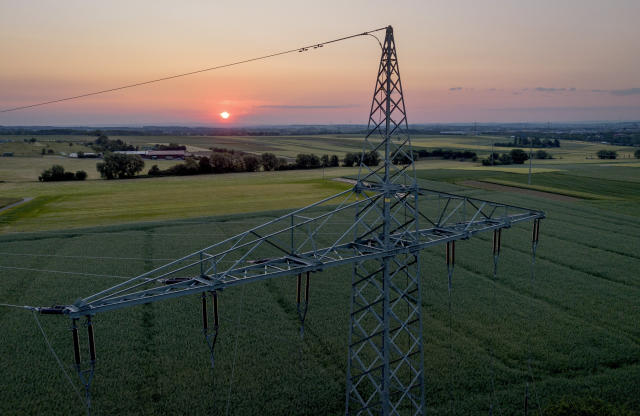
As 30 energy environment and trade ministers plus 50 CEOs assemble in Paris for the 8th international conference on energy efficiency, the International Energy Agency is urgently calling for greater investment in energy efficiency for factories, cars and appliances to meet international climate goals.
The agency touted recent global progress: A report released Wednesday says that demand for energy is growing, yet emissions are not growing as fast. Efficiency is increasing every year as technology improves, and last year that increase was twice the average of the previous five years.
“We’re at a real juncture where more efficient, more clean, more affordable technology is starting to dominate,” said Brian Motherway, chief of energy efficiency at the IEA, during a press conference Tuesday.
Eliminating wasted energy is the most affordable way to bring goods and services to the people who need them — while slowing greenhouse gas emissions — the main driver of global warming, energy experts say.
“Government initiatives are critical because they get big buildings, they get big housing projects, they get industry (and) they have to take it seriously,” said Daniel Kammen, a professor of energy at the University of California, Berkeley who was not involved in the IEA report.
According to the report, total public and private investment in energy efficiency increased by 15% in 2022 to $600 billion from the previous year. This year, investment is expected to grow by only 4%, which Motherway called concerning.
To limit global warming to just 1.5 degrees Celsius (2.7 degrees Fahrenheit) and avoid severe climate disruption, the world needs to double energy efficiency for the rest of the decade. Annual investment of $1.8 trillion is needed to make that happen, the report says.
The technology exists, we just need to prioritizing spending, Philippe Delorme, executive vice president of Europe operations for Schneider Electric said in a press conference.
Experts not involved in the report agreed. “Governments should be doing more, whether that relates to appliance efficiency, cars or buildings,” said Steven Nadel, executive director of the American Council for an Energy-Efficient Economy.
Electric vehicles and heat pumps grew in popularity last year, adding to the demand for electricity. Heat pumps efficiently wring energy out of the air, or more occasionally, the ground, and they pump heat either into or out of a building depending whether they are heating or air conditioning. Their sales increased ten percent globally and nearly 40 percent in Europe last year. Electric vehicles sales also grew, now making up 14 percent of all new car sales, and are on track for 18 percent of the new car market this year.
In many places, electricity to heat homes and power vehicles still relies on fossil fuel energy that burns carbon. But as utilities build out more renewable energy, emissions decline. That same progress is not built into gasoline-burning cars or homes that burn natural gas for cooking and heating. They will continue to combust hydrocarbons and release carbon dioxide.
Some of the recent interest in energy efficiency worldwide has been influenced by fears of a global energy shortage caused by Russia's invasion of Ukraine.
Philippe Benoit, a researcher at the Center on Global Energy Policy at Columbia University, said that in order to meet climate goals, money needs to go into better energy efficiency even when there is no fear of energy scarcity.
“The greatest interest in energy efficiency is often triggered by an energy supply concern,” he said. “We need to get to the point where without even a potential energy supply crisis, that governments, households and businesses are increasing their investment in energy efficiency. That’s what our climate goal requires.”
___
Peterson reported from Denver. Costley reported from Washington, DC.
___
European bison to roam more Kent woodland as new bridges approved
The bridges will help the wild bison live alongside people and roam across 200 hectares of woodland.
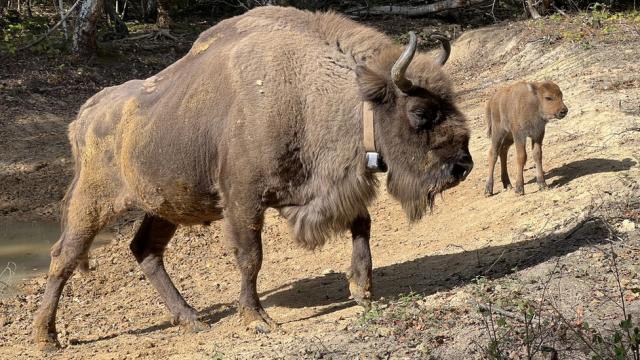
Bridges that will allow European bison that were released into the wild near Canterbury to roam across a wider area of woodland are to be erected.
The bridges will allow them to roam 200 hectares, and will also enable visitors to walk around the woods while the animals pass underneath.
Kent Wildlife Trust aim to build four bridges, costing £250,000 each.
The plan has recently been approved by Canterbury City Council.
West Blean and Thornden Woods, where the animals live as the UK's only free-roaming bison herd, has several public footpaths.
The paths prevent the herd from having full access to the woodland, as legislation prevents the bison from sharing the same space as the public.
Stan Smith, project manager at Kent Wildlife Trust, said the trust did not want to reroute public rights of way as "taking away the public's opportunity to see the bison was not an option".
"We could have temporarily closed the paths and encouraged the bison to move from one part of the woodland to another with food but this would be in opposition to our guiding principles of allowing these eco-system engineers to be wild," said Mr Smith.
The bison were originally introduced to help restore the woodland to its natural state as they naturally fell trees by rubbing against them.
This creates space and light and provides deadwood for other plants and animals.
Denbighshire: Dozens of dead sharks on Prestatyn beach
Passers-by spotted about 25-30 of the "gummy sharks" washed up across the beach.
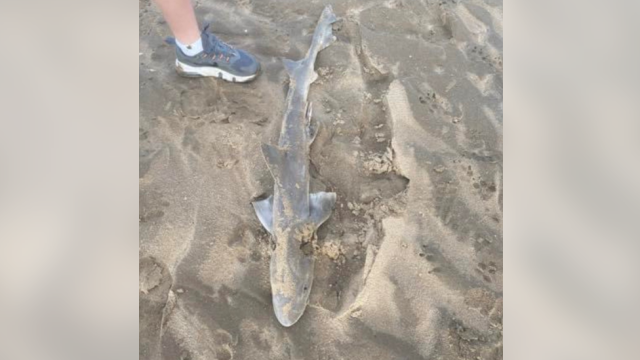
Dozens of small sharks have been spotted washed up on a Denbighshire beach.
They have been identified as starry smooth-hounds, or gummy sharks - due to their lack of sharp teeth.
Passers-by spotted 25 to 30 of the sharks on the Prestatyn beach on Tuesday before posting images to social media.
Marine expert Gem Simmons said she had tried to take samples, but the sharks had "fallen prey to herring gulls".
The small sharks, which are widespread in UK waters, mainly feed on crustaceans and shellfish.
Ms Simmons, of British Divers Marine Life Rescue, said she and the organisation Marine Environmental Monitoring had been attempting to work out how they had washed up.
"What we wanted was to take samples of the gills, to see if this has happened as a result of by-catch (in fishing nets)," she said.
She added that there had been a few reports of illegal fishing in the area over the past few months, but it was unclear if there was any connection with the beached sharks.
"To find one or two is normal, but so many is worrying," she added, but said it wasn't possible to reach a conclusion yet as to why the sharks washed up.
She is now trying to collate data after reports of other washed up sharks in smaller numbers, along the stretch of coast between Rhyl and Talacre.
Leicestershire nature fans urged to look out for glow worms
A wildlife trust is calling on members of the public to help it track the creatures.
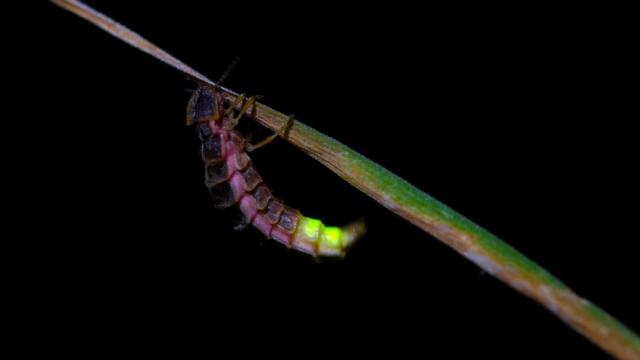
A wildlife trust is calling on members of the public to help it track glow worms, as part of a project to conserve them.
Leicestershire and Rutland Wildlife Trust is asking for people to look out for the creatures in local areas.
Glow worms, which are famous for their bioluminescence, emit a vibrant green light from their abdomens to attract mates.
Tim Sexton, from the trust, said glow worms were declining in the UK.
The trust asked people to look out for glow worms in gardens, roadside verges, woodland tracks, disused railway lines, local parks and nature reserves.
It said the creatures were instantly recognisable due to the bright green glow emitted by the females, which is used to attract a mate.
It added they were most active between mid-June and late July.
Mr Sexton, senior recording and species officer, said: "Sadly, glow-worms are experiencing rapid declines in the UK.
"Habitat loss, light pollution, and climate change are major contributing factors.
"To understand the status of glow worms in Leicestershire and Rutland better, we are urging the public to report any sightings during evening walks."
He asked people to share as much information as possible, including location, the number of glowing females spotted and a brief habitat description.
"With the public's help, Leicestershire and Rutland Wildlife Trust can contribute to the conservation of these fascinating creatures."
Scientists Discover a Virgin Birth in a Crocodile
In January 2018, a female crocodile in a Costa Rican zoo laid a clutch of eggs. That was peculiar: She’d been living alone for 16 years. While crocodiles can lay sterile eggs that don’t develop, some of this clutch looked quite normal. And one of them — in a plot twist familiar to anyone who has watched “Jurassic Park” — continued to mature in an incubator. In this case, the egg eventually yielded a perfectly formed but stillborn baby crocodile. In a paper out Wednesday in the journal Biology Le

In January 2018, a female crocodile in a Costa Rican zoo laid a clutch of eggs. That was peculiar: She’d been living alone for 16 years.
While crocodiles can lay sterile eggs that don’t develop, some of this clutch looked quite normal. And one of them — in a plot twist familiar to anyone who has watched “Jurassic Park” — continued to mature in an incubator. In this case, the egg eventually yielded a perfectly formed but stillborn baby crocodile.
In a paper out Wednesday in the journal Biology Letters, a team of researchers report that the baby crocodile was a parthenogen — the product of a virgin birth, containing only genetic material from its mother. While parthenogenesis has been identified in creatures as diverse as king cobras, sawfish and California condors, this is the first time it has been found in crocodiles. And because of where crocodiles fall on the tree of life, it implies that pterosaurs and dinosaurs might also have been capable of such reproductive feats.
Here’s how a virgin birth happens: As an egg cell matures in its mother’s body, it divides repeatedly to generate a final product with exactly half the genes needed for an individual. Three smaller cellular sacs containing chromosomes, known as polar bodies, are formed as byproducts. Polar bodies usually wither away. But in vertebrates that can perform parthenogenesis, one polar body sometimes fuses with the egg, creating a cell with the necessary complement of chromosomes to form an individual.
That’s what appears to have happened in the case of the crocodile, said Warren Booth, an associate professor at Virginia Tech who has studied the eggs. Booth is an entomologist whose main focus is bedbugs, but he has an extensive sideline in identifying parthenogenesis. Sequencing of the parthenogenetic crocodile’s genome suggests that its chromosomes differ from the mother’s at their tips, where there’s been a little reshuffling of her DNA — a telltale sign of polar body fusion.
This is precisely what happens in parthenogenesis in birds, lizards and snakes, Booth said, suggesting that this group of animals inherited the ability from a common ancestor. But crocodiles evolved long before many other modern parthenogenetic animals, which suggests intriguing possibilities about the creatures that came in between.
“What this tells us is it’s very likely that this also happened in pterosaurs and dinosaurs,” Booth said.
Why do animals produce parthenogens? Though some parthenogens can survive to adulthood and mate, they are not always the healthiest creatures, Booth said. But the increasing ease of DNA analysis, which makes animals born this way easier to identify, has shown that they are not all that rare.
“It’s much more widespread than people think,” he said.
It’s possible that parthenogenesis gives a species the ability to survive extended periods when no mate is available. A fresh individual, bearing largely the same genes as its parent, might live long enough for a mate to arrive, thus allowing sexual reproduction, which tends to produce hardier offspring.
But it is also possible that parthenogenesis is simply a trait that doesn’t have enough downsides for evolution to weed it out, Booth said. It is not necessarily a response to stress or even a lack of mates. In 2020, scientists discovered that lizards can mate and then lay clutches of eggs where some are normal offspring and some are parthenogens. This is Booth’s hunch: It’s an ability that can be switched on or off, and it is perhaps controlled by a single gene.
So, did dinosaurs do it, as the discovery of parthenogenesis in crocodiles suggests? Parthenogenesis is best confirmed with DNA analysis, a process that has allowed scientists to tell it apart from delayed conception, where a female stores sperm for as long as six years before using it to fertilize eggs. Without the ability to retrieve dinosaurs’ and pterosaurs’ DNA, which does not persist in fossils, certainty is not available.
“We’ll never be able to prove they could do it,” Booth said. “But it suggests they had the ability.”
c.2023 The New York Times Company
0 Likes
